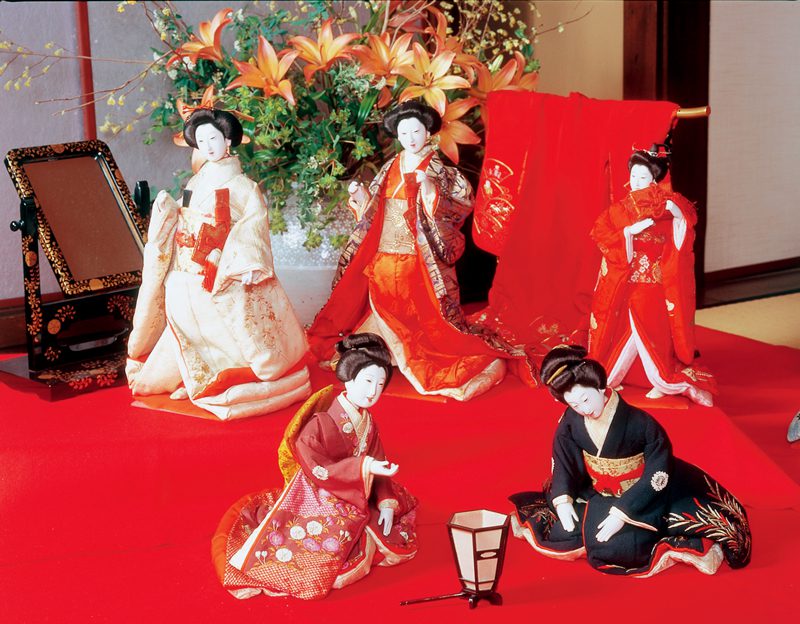
The dolls still remain beautiful after over one hundred years since their creation.
The first owner of YODOKO GUEST HOUSE, the eighth-generation head of his family, Tazaemon Yamamura, asked Heizo Oki, the third-generation master craftsman of the doll shop "Maruhei" in Kyoto, to make dolls for his first daughter to celebrate her birthday. They took two years to finish, from 1900 to 1901.
Sometime between February and April every year—around the time of Hinamatsuri (Girls’ Festival)—Yodoko Guest House puts the Yamamura family’s collection of hina dolls on public display.
A set of dolls and decorations with seven servant dolls
A set five bride dolls, and lacquered bridal trousseau
A set of seventeen dolls with cherry trees, pine trees, and willows, at a cherry viewing party
The finest dolls made with excellent skill and materials
The dolls were made by craftsmen specialized in different stages of their production. The faces of the dolls were made by the person who was renown as the best craftsman of doll's heads at the time, and they have very classic features.Moreover, the chalk used for finishing the faces and hands at that time was different than at present, because its main ingredient, seashells, is no longer the same due to changes in the natural environment. It is said, therefore, that it is impossible to recreate their distinctive texture. The dolls are 45 cm in height, which is large for Hina Dolls, and attests that they are of the finest quality, made with the excellent craftsmanship and materials of the time.
Works by Heizo Oki, the third-generation master craftsman of the prestigious "Maruhei"
"Maruhei," the crafter of these dolls, is a long-established doll shop in Kyoto with over two hundred years of history since its foundation in 1779, and is renown for the masterly performance of its craftsmen.The style of these works places emphasis on realistic description and historical background, and mature works are admired as masterpieces of Kyoto and Hina dolls. The artist of the dolls, Heizo Oki, the third-generation master craftsman, received the Gold Prize at the Paris Exposition in France in 1890, and the President's Prize at the 3rd National Industrial Exhibition in 1891. He was the most prestigious doll craftsman of his time, and a number of his works have been delivered to the Royal Family and nobility.
The inherited tradition and original style of "Maruhei"
A number of processes in doll crafting, such as head making, are performed by specialists, and it is a doll craftsman's job to put these pieces together and finish the doll. At "Maruhei," not only the finishing process, but also the process of dressing the doll was done by the master. From choosing and fitting clothes and "defining arm position," to deciding the expressions of arms and hands, important work at the final process is done in the same way as one hundred years ago. People who do such work are called "Shokuakindo" in Japanese, and "Maruhei" 's original dolls are made the same way they were one hundred years before. The skills and hearts of the craftsmen are put into each stage of the process to bring the dolls to life. "Maruhei" 's dolls are especially treasured because so few can be made at one time





